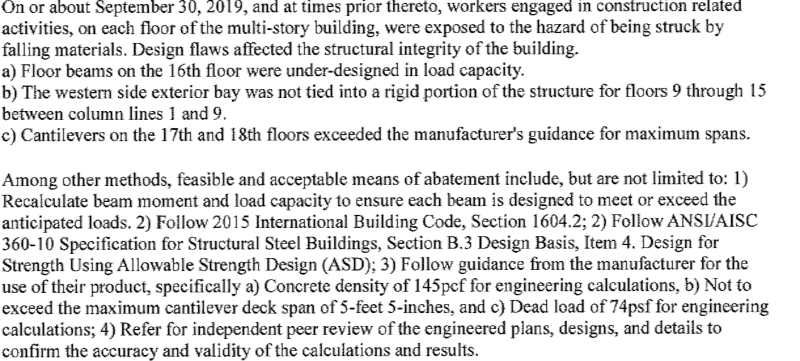Boris_Kuznetsov
Structural
This is the quote from AISC that clearly explains the cause of Hard Rock hotel collapse.
"While ordinarily the existence of masonry walls provides enough lateral support for tier building frames to control lateral deflection, the increasing use of ... wide column spacing for high-rise structures not provided with a positive system of diagonal bracing can create a situation where only bending stiffness of the frame itself provides this support.
In this case the effective length factor, K, is dependent upon bending stiffness provided by the floor. If combined stiffness provided by the beams is sufficiently small, relative to that of unbraced column, effective length, Kl could exceed two or more story heights."
The picture of the building after collapse showing large sagging slender floors and inclined stiff columns clearly confirms that this is the case. The collapse had happened because of huge insufficiency of steel beams.
"While ordinarily the existence of masonry walls provides enough lateral support for tier building frames to control lateral deflection, the increasing use of ... wide column spacing for high-rise structures not provided with a positive system of diagonal bracing can create a situation where only bending stiffness of the frame itself provides this support.
In this case the effective length factor, K, is dependent upon bending stiffness provided by the floor. If combined stiffness provided by the beams is sufficiently small, relative to that of unbraced column, effective length, Kl could exceed two or more story heights."
The picture of the building after collapse showing large sagging slender floors and inclined stiff columns clearly confirms that this is the case. The collapse had happened because of huge insufficiency of steel beams.

